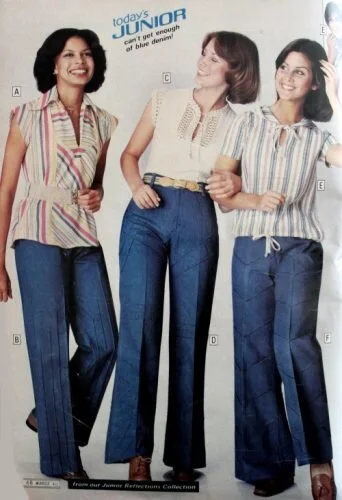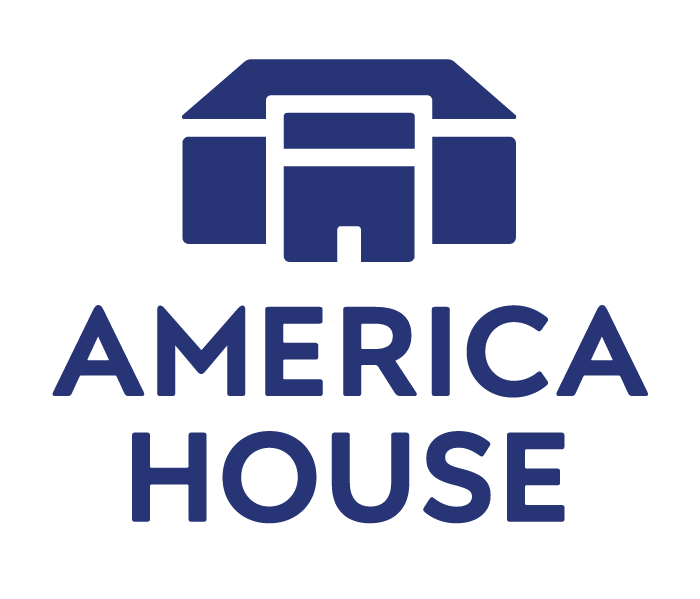American Fashion Trends Through the Decades
Fashion can often be considered an expression of one’s true personality and creativity. From famous fashion shows in Milan, Italy to London fashion week, fashion dominates much of our everyday lives. Every day, we debate what to wear to work, to school, to a party, etc. Undoubtedly, with changing times, fashion has changed over the decades to cater to the changing environments.
Here are the main American fashion trends through the decades that have defined much of the culture:
1920s:
Women typically wore dresses that were below the knee and were straight yet slightly flowy. They paired these dresses with T-strap heels, fur coats or fringe wraps, pearl necklaces, and short, bobbed hair. These women are often remembered as “Flappers”. Dresses were generally colorful or patterned (plaid, checked). Dresses also had some type of collar - a staple of 1920s women’s fashion. Women also always wore small hats outside the home, from bucket hats to berets. 1920s womens fashion “embraced simplicity”.
Men also embraced the idea of simplicity and stopped wearing three-piece suits. In place of this, they began to wear soft collar shirts and jackets with one or two buttons. The design of “pinstripes” also became popular during this time. Men wore long overcoats, pullover sweaters, fedora hats, and lace-up boots. They also used canes, gloves, and pocket watches.




1930s:
The 1930s was the time when Hollywood first began to emerge. The fashion of this period was influenced by films and the stars of the movie world. 1920s women’s fashion was often characterized as “boyish”, but 1930s fashion began to use more of the “feminine silhouette”. After the stock market crash in 1929, dress length moved back down to the ankles, but dresses became tighter and more fitted towards each woman. The norm for dresses was ”slender, elongated torso with widening shoulders”. Typical evening dresses were low-back and made of satin. Dresses for women during this time also began to come in more patterns (floral, plaid, dots, other abstract designs). Actresses like Greta Garbo and Bette Davis became the Hollywood fashion icons that many women looked up to.
Menswear also began to take inspiration from films of the era. Men moved away from “elite” looking suits to those that reflected the working class. Knitted sweaters and collar shirts became a popular day-time wear item. Men began to wear overall less formal clothes on a daily basis, but still used formal suits (similar to 1920s style) for any special occasions or events.





1940s:
During the 1940s, men’s fashion stopped progressing from the 1930s. Due to the start of World War II in 1939, men typically adorned their military uniforms. However, men began to wear suits that were colorful, baggy, and paired with a long jacket.
Women’s fashion was defined by a “clean and slim silhouette”, almost military-style like. Due to the war, New York City became the center of the fashion world. Many of the materials typically used for womenswear (satin, leather, wool), was needed to make military uniforms and parachutes for soldiers. Thus, people turned to cotton and nylon as materials became far more scarce. Skirts became shorter and tighter and patterns were a thing of the past as more women opted to wear plain and practical colors. People began to dress far more casually to outings and formal events.








1950s:
During the 1950s, many of the big designer brands we see today began to emerge (Christain Dior, Balenciaga, Coco Chanel, etc.). Menswear began to progress more towards casual outfits while women’s clothing displayed elegance and formality. Women’s dresses still had the slim waist with a lower-ankle flair. Bright and patterned colors also made a comeback during this time. During this time, there also began to be more style options for women to choose from. Some chose between dresses while others were drawn to business-like suits. Sundresses, shin/ankle-length skirts, and bathing suits became popular.
Men began to wear narrow-fitting trousers, t-shirts, and velvet-collared jackets. Much of men’s fashion was inspired by actor James Dean and singer Elvis Presley. A typical, everyday outfit for men in the late 1950s became a white t-shirt, jeans, and a leather jacket.









1960s:
Women’s dresses were straight fitting, often with a white collar. Women’s sweaters and shirts were also knitted and turtleneck style. During the 1960s, more and more women began to wear pants as well that were high-waisted and slim-fitted legs. During this time, low heels and flats/pump shoes were also in style. Short and bobbed hair was also the norm.
For men, pants became far more tighter and they began to wear silk scarves, or ascots. While their pants did get tighter, they began to flare out at the bottom. Suit jackets became double-breasted and were often in toned down and neutral hues. Casual clothing could include short-sleeved, patterned, button-down shirts.










1970s:
Women during the 1970s wore granny-style or hippie-style dresses, bell-bottom pants, tunic tops, and graphic t-shirts. Many dresses now went only up to knee length. To the workplace, they would wear dress pants (or pantsuits) with silk-bow blouses and a blazer. For a night out, some women preferred wearing jumpsuits. Knit vests worn on top were also in high demand.
Men also began to wear low-rise, bell-bottom jeans and platform shoes. Track suits also become a “leisure” clothing. Their shirts went untucked and they began to grow their hair out longer (taking inspiration from bands such as The Beatles).







1980s:
1980s fashion relied heavily around bright colors and hues. For both men and women, the waistline of pants was high. A big staple of the 1980s was messy hair, neon colors/makeup, and big hoop earrings. Most of the 1980s fashion was bizarre in terms of the previous decades. Women could wear brightly-colored leggings paired with an oversized top or “parachute pants” with a small v-neck top - all were in style! Now, with the introduction of MTV and music videos, fashion became a far more widespread aspect of American culture. For men, sweatpants became far more popular and men began to wear sports jerseys (NFL, NHL). For men, denim jackets and jeans as well as corduroy pants were popular. For women turtlenecks and high-waisted pants were once again in fashion.






1990s:
Clothing during the 1990s was still loose fitting, but the colors were not as vibrant as the 1980s. Tapered pants and Nike Air Jordan’s were in high demand. Baseball caps came into fashion for both men and women during this time (and could be worn in many different ways/styles). Plaid shirts also become a huge closet staple. Amongst the young people, hip-hop style became the most popular as hip-hop music became more mainstream. People also began to wear name-brand designer clothing far more.





2000s:
During the 2000s, women’s fashion became far more feminine once again. Denim miniskirts, halter tops, low-rise jeans, and capri pants where what everyone was wearing. Known as the mash-up decade, designers began to take inspiration from many different decades. Men began to wear more athletic attire in their everyday clothes. Baseball caps made a comeback as did bootcut jeans.




ABOUT THE AUTHOR
Annik Brar is a student at the George Washington University in Washington, D.C. studying International Affairs and Psychology. In her free time, she manages a support page for people with Type 1 Diabetes. She also loves photography and traveling and can speak Punjabi and Hindi fluently!











